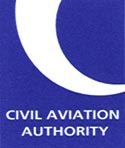 |
SD-2024/001: Active Carbon Monoxide Detectors in Piston Engine Aircraft Operations |
The CAA have published Safety Directive SD-2024/001 which requires a functioning active CO detector capable of alerting via aural and/or visual warnings to be present in affected piston engine aircraft when operating with passengers on board who do not hold a recognised pilot qualification.
This SD is applicable to all piston engine aircraft, but excludes:
a) Single-seat aircraft;
b) Aircraft with an open cockpit/cabin;
c) Aircraft performing aerobatic manoeuvres (see paragraph 7(a) of the OD), unless as part of a Safety Standards Acknowledgement and Consent (SSAC) operation (see paragraph 7(b) of the OD);
d) Aircraft with piston engines located above/behind the cabin (e.g. helicopters, gyroplanes) unless cabin heat is also provided via an exhaust heat exchanger or a combustion heater; or
e) Aircraft with only wing-mounted piston engines.
Installing or carrying an active CO detector on board does not require CAA approval. Active CO detectors can be permanently installed in UK Part 21 and UK non-Part 21 aircraft as a ‘standard change’ under the provisions of CS-STAN (Standard Change CS-SC107a) without any CAA involvement. Portable CO detectors can also be carried on board without any airworthiness approval. Regardless of which active CO detector is selected, pilots should ensure the device is functional, audible (and visible if equipped with a digital screen) and securely positioned in the aircraft before each flight.

